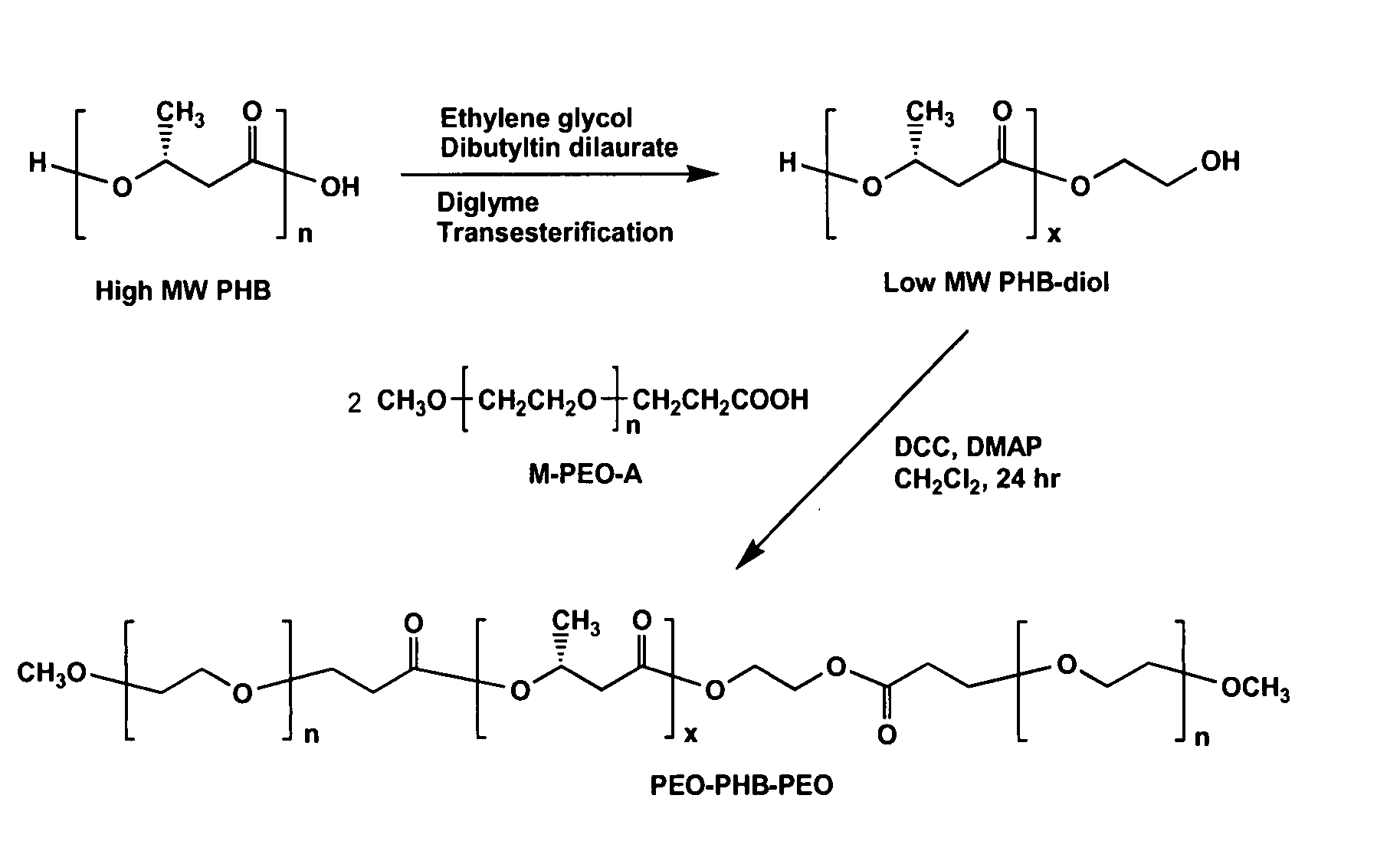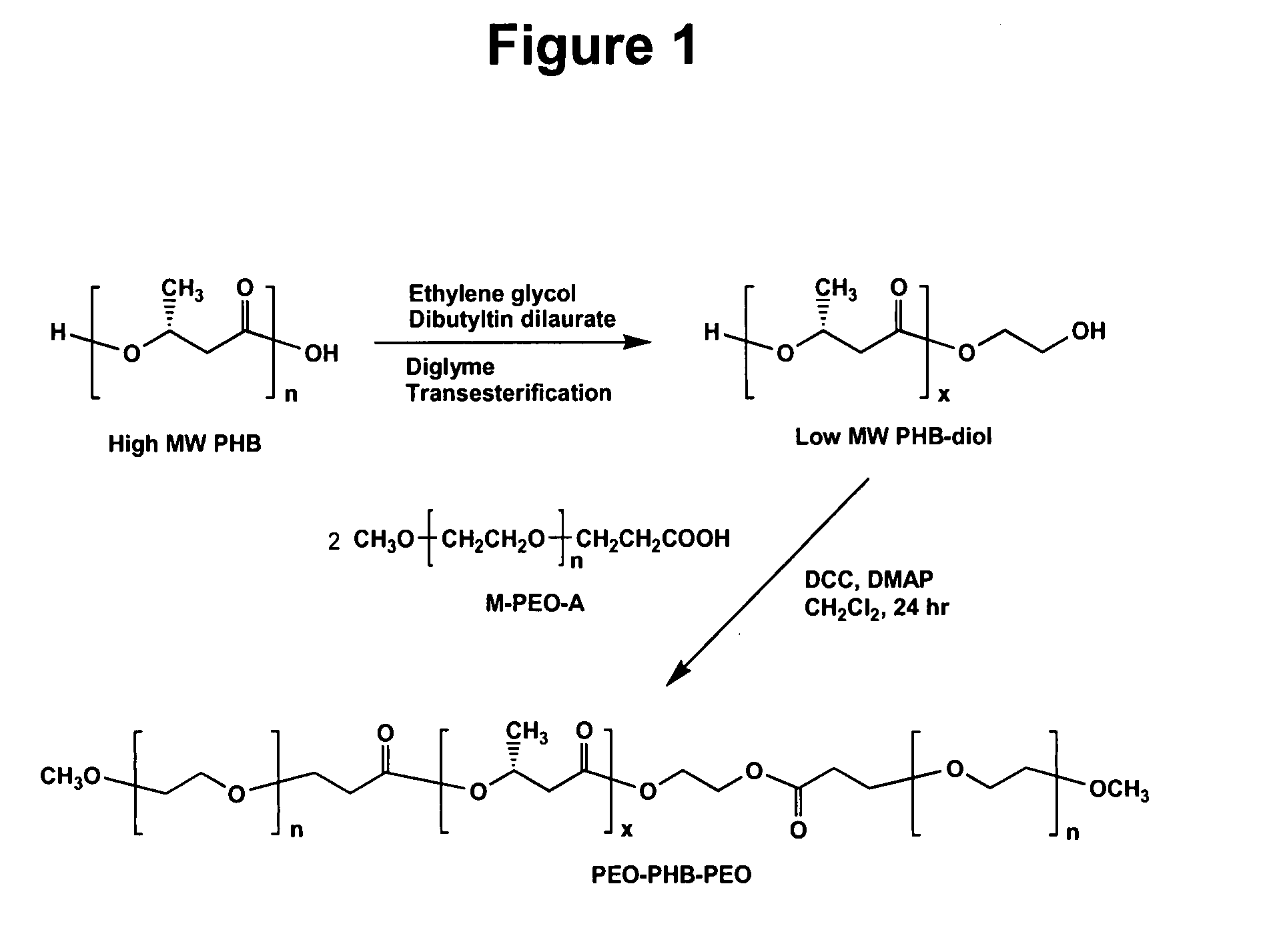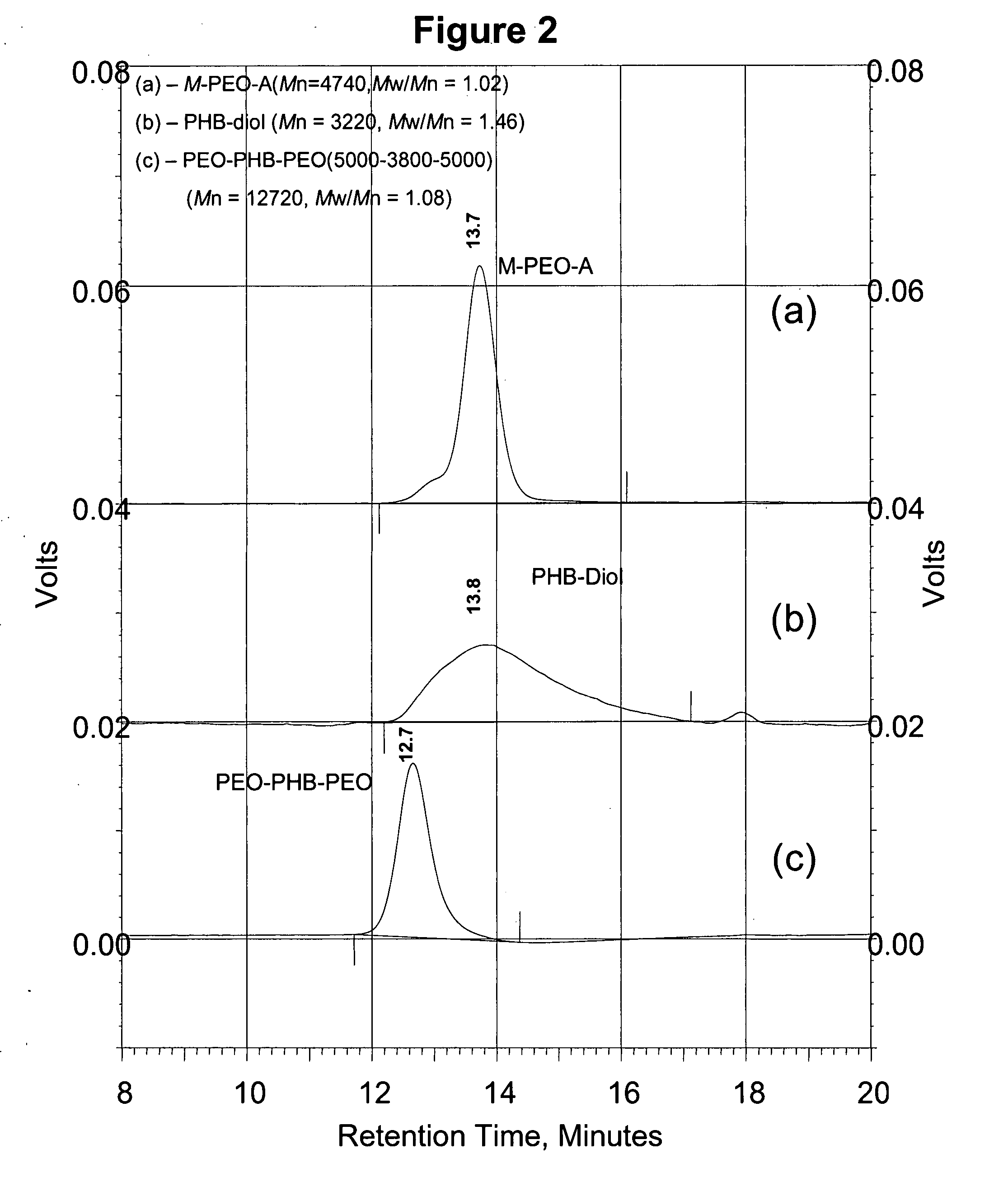Biodegradable triblock copolymers, synthesis methods therefore, and hydrogels and biomaterials made there from
a biodegradable triblock and copolymer technology, applied in the direction of depsipeptides, peptide/protein ingredients, powder delivery, etc., can solve the problems of slow degradation rate of complicated fabrication process, and near instantaneous peak in blood plasma drug concentration, so as to improve the hydrogel network, improve the synthesis efficiency, and improve the effect of synthesis efficiency
- Summary
- Abstract
- Description
- Claims
- Application Information
AI Technical Summary
Benefits of technology
Problems solved by technology
Method used
Image
Examples
example 1
Synthesis and Characterization of Triblock Copolymers
a. Synthesis of Triblock Copolymers
[0084] Telechelic hydroxylated PHB (PHB-diol) prepolymers with various molecular weights were prepared by a transesterification procedure from the natural PHB and diethylene glycol, with dibutyltin dilaurate as a catalyst in diglyme as reported previously. Thomas, D. et al., Macromol. Chem. Phys. 197:1609-1614 (1996). The transesterification reaction was allowed to proceed for a few hours to overnight, to produce PHB-diol with average molecular weights ranging from a few hundred to a few thousand as determined by GPC. M-PEO-monocarboxylic acid (M-PEO-A) prepolymers with Mn of 1820 and 4740 were prepared by reaction of M-PEO with succinic anhydride in the presence of 4-(dimethylamino)pyridine (DMAP) and triethylamine in 1,4-dioxane as reported previously. Bae, Y. et al., J. Controlled Release 64:3-13 (2000).
[0085] Then, as one example of the invention, these bifunctionalized PHB-diol prepolymer...
example 2
Triblock Copolymer and Cyclodextrin Complexation and Release Kinetics
a. Formation of Inclusion Complexes
[0095] The reaction scheme of FIG. 1 for synthesis of PEO-PHB-PEO triblock copolymers was again followed. Briefly, high molecular weight PHB was first converted into PHB-diols with lower molecular weights. The PHB-diols were then coupled with PEO-monocarboxylic acid (Mr 5000) to yield the PEO-PHB-PEO triblock copolymers. Two triblock copolymers PEO-PHB-PEO (5000-2300-5000) and PEO-PHB-PEO (5000-3850-5000) were prepared and characterized by NMR, GPC, FI-IR, and DSC. Both copolymers are water-soluble at room temperature. They form micelles in aqueous solutions at low concentrations, which was confirmed by dye solubility experiments using 1,3,5-diphenylhexatriene and pyrene. The driving force of the micelle formation is believed to derive from the strong hydrophobic interactions between the PHB blocks.
[0096] Despite the formation of micelles, solutions of 10 wt % of both polymers ...
example 3
Hydrogel Release Kinetics for Alternate Model Drug
a. Preparation of α-CD-PEO-PHB-PEO Hydrogels
[0099] A copolymer solution or gel was prepared by first adding 0.090 grams of PBS into 0.060 grams of the triblock PEO-PHB-PEO copolymer, synthesized in accordance with the procedures of Example 1, in a 0.6 mL cuvette. Then 0.30 grams of PBS solution containing 14.5% of α-CD and 0.5% of dextran-FITC (molecular weight 20,000) was added into the PBS-copolymer mixture in the cuvette. The solutions were mixed thoroughly, and then allowed to stand at room temperature overnight. The mixture formed a hydrogel in the cuvette, and then its in vitro release kinetics were studied as further described below. This procedure was carried out once using PEO-PHB-PEO (5000-5500-5000) copolymer and once using PEO-PHB-PEO (5000-3800-5000) copolymer.
b. Preparation of Pure PEO-PHB-PEO Hydrogels
[0100] A copolymer solution or gel was prepared by adding 0.090 grams of PBS into 0.060 grams of the triblock PEO-P...
PUM
| Property | Measurement | Unit |
|---|---|---|
| temperature | aaaaa | aaaaa |
| temperature | aaaaa | aaaaa |
| 2θ | aaaaa | aaaaa |
Abstract
Description
Claims
Application Information
 Login to View More
Login to View More - R&D
- Intellectual Property
- Life Sciences
- Materials
- Tech Scout
- Unparalleled Data Quality
- Higher Quality Content
- 60% Fewer Hallucinations
Browse by: Latest US Patents, China's latest patents, Technical Efficacy Thesaurus, Application Domain, Technology Topic, Popular Technical Reports.
© 2025 PatSnap. All rights reserved.Legal|Privacy policy|Modern Slavery Act Transparency Statement|Sitemap|About US| Contact US: help@patsnap.com



